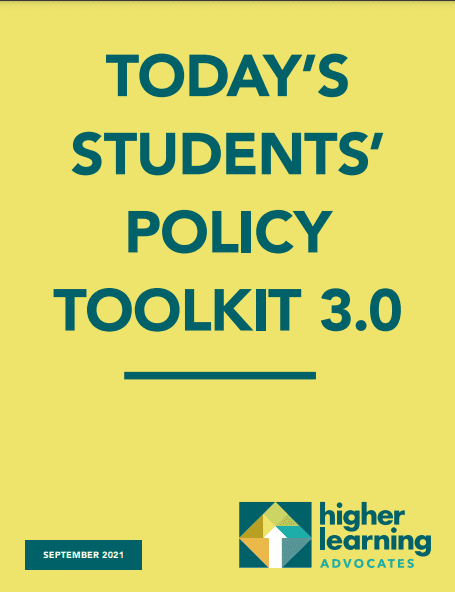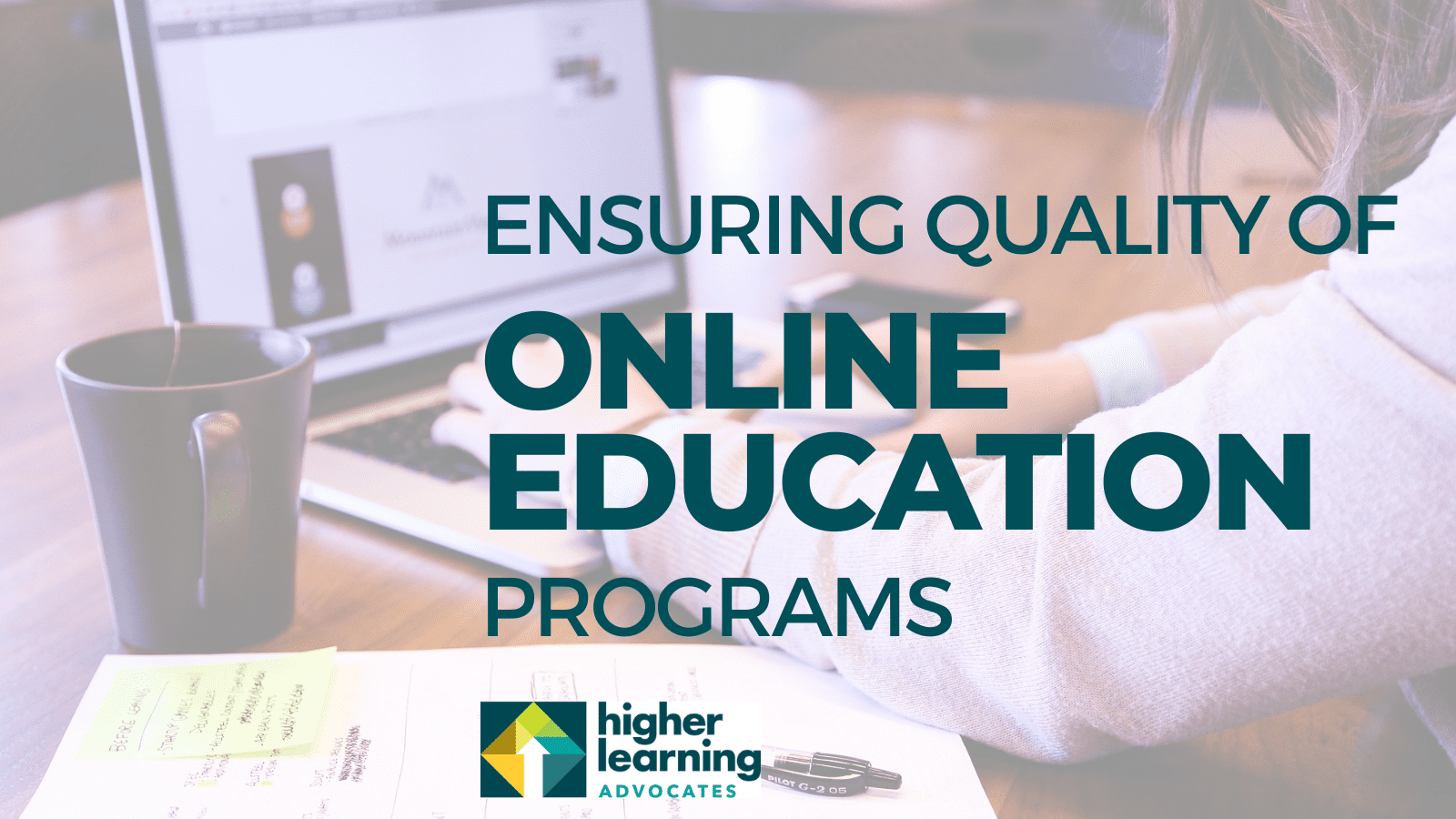Policy Reports
Satisfactory Academic Progress: Making Financial Aid Work for Today’s Students
A satisfactory academic progress, or SAP, reset can make college more affordable for low-income Americans, especially the 39 million with some college and no credential (SCNC) population. Higher Learning Advocates’ analyzed how in a new higher education policy brief, Satisfactory Academic Progress: Making Financial Aid Work for Today’s Students. In the brief, we highlight how…
Higher Education Policy Toolkit
Education creates opportunities and is integral to maintaining America’s globally competitive economy. An educated workforce begins in local communities and expands to the state, the nation, and the world. Higher Learning Advocates higher education policy toolkit for the 118th Congress focuses on connecting opportunity, supporting students, and delivering value with solutions to help strengthen our nation’s…
Online Program Managers (OPMS): Ensuring Quality & Protecting Innovation
Over the last two years, the COVID-19 pandemic and the changing needs of today’s students have necessitated an unprecedented shift towards online learning. Institutions of higher education were able to meet this demand partially due to online program management entities, or OPMs. OPMs are service providers which work through contracts with universities to bring academic…
Outsourcing Online Programs: Policy Options for OPM Oversight
As a form of outsourcing in higher education, online program management (OPM) is not remarkable. Universities regularly, and with little fanfare, outsource many functions that used to be done in-house. Bookstores, dining halls, housing facilities, parking garages, and housekeeping are all part of the outsourcing model in American higher education. This brief is intended to…
What Works for Today’s Students: Connecting Students to Means-Tested Benefits
Students facing basic needs insecurities are significantly less likely to leave college without completing an associate’s or bachelor’s degree. Today’s students show a great deal of resilience in the face of adversity—but succeeding in an academic environment is extremely difficult without access to basic needs, like food and shelter. The federal government has various programs…
Policy Toolkit 3.0
Today’s students are more diverse than any previous generation of college students: they’re diverse in age, race, and income level. They’re more mobile and may not live on campus. Most participate in the workforce, either full-time or part-time. Work and family responsibilities beyond the classroom—whether that is on-campus or online—often compete with the educational goals…
Ensuring Quality of Online Education Programs
In spring 2020, as the coronavirus pandemic swept across the country, colleges and universities swiftly shuttered their campuses to students, unsure of for how long or what was coming next. As faculty scrambled to continue their courses virtually, they utilized emergency remote learning to deliver course content like lectures and seminars, facilitated online assessments, and…
Ensuring Equity: Policy Recommendations to Increase the Diversity of Selective Public Institutions of Higher Education
Not all institutions of higher education are equal—in their funding, resources, or student outcomes. Selective public institutions, typically defined as those with lower acceptance rates and high graduation rates compared to other public institutions, often offer the best odds for their students to succeed. Enrollment at selective institutions is correlated with student success, including higher…



